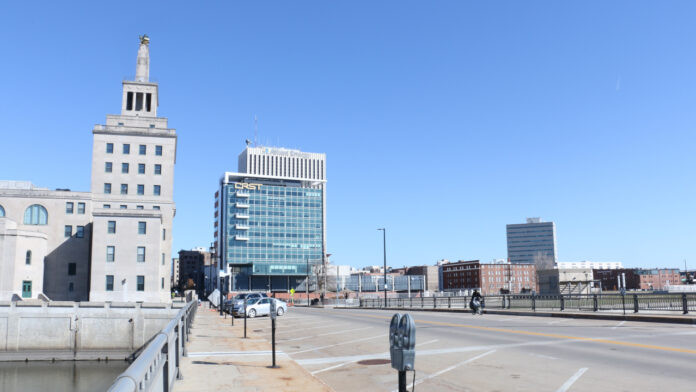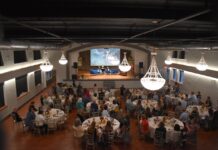
A far-reaching visioning plan for downtown Cedar Rapids envisions a rejuvenated mixed-use city core with evolving recreational and entertainment opportunities, a renewed focus on embracing the Cedar River and improved connectivity with adjacent districts and neighborhoods. And even as the plan was formally adopted by the Cedar Rapids City Council Tuesday, Dec. 5, a number […]
Already a subscriber? Log in
Want to Read More?
Get immediate, unlimited access to all subscriber content and much more.
Learn more in our subscriber FAQ.
- Unparalleled business coverage of the Iowa City / Cedar Rapids corridor.
- Immediate access to subscriber-only content on our website.
- 26 issues per year delivered digitally, in print or both.
- Support locally owned and operated journalism.
Do you want to read and share this article without a paywall?
Click here to purchase a paywall bypass linkA far-reaching visioning plan for downtown Cedar Rapids envisions a rejuvenated mixed-use city core with evolving recreational and entertainment opportunities, a renewed focus on embracing the Cedar River and improved connectivity with adjacent districts and neighborhoods.
And even as the plan was formally adopted by the Cedar Rapids City Council Tuesday, Dec. 5, a number of questions remain unanswered, including how the plan will specifically be implemented.
In the works since spring 2023, the plan was developed by Progressive Urban Management Associates (P.U.M.A.) of Denver, Colorado, with support from the City of Cedar Rapids, the Cedar Rapids Metro Economic Alliance and the Downtown Self-Supported Municipal Improvement District (SSMID) and in partnership with Linn County and the 2001 Development Corporation, a group of local business leaders focused on downtown development initiatives.
The plan, designed to guide the growth and development of downtown Cedar Rapids over the next five years, was presented to the council by P.U.M.A. president Brad Segal and vice president Amanda Kannard.
In essence, the plan focuses on three primary goals: Embracing the Cedar River as a key component in downtown revitalization, ensuring downtown is “activated and vibrant,” and improving connectivity within downtown and to adjacent districts and neighborhoods, including the MedQuarter and the Czech Village/New Bohemia districts.
Ms. Kannard noted that community engagement was a key element in developing the plan, including engagement with downtown stakeholders, regular check-ins with local working group members, roundtable meetings and individual interviews. More than 1,400 respondents to an online survey representing a wide range of ages and incomes, Ms. Kannard added.
Goals, strategies and ‘catalytic projects’
The first portion of the report keyed on a trio of overarching goals, including:- Embrace the Cedar River – A top community priority will create an activated downtown waterfront by incorporating the Cedar River into the built environment. Second Avenue could be converted into a curb-less festival street in the short term, which could be closed temporarily for festivals and other events, and a linear park in the longer term. And an activated Mays Island would incorporate a public plaza and flexible lawn area, a boardwalk and fishing area, and a picnic and beach area.
- Ensure an activated and vibrant downtown area – A clean, safe and welcoming downtown area would regularly draw visitors from across the city, in part by converting Third Street SE to a “festival street” and rerouting the Cedar Valley Nature Trail to connect with Third Street. Regular programming in downtown public spaces would also be offered, with public art and other physical enhancements, and retaining downtown jobs would become a focal effort. A broader range of social options, including the potential for riverside dining venues, would also improve the area’s cross-generational appeal.
- Improve connectivity within downtown and to adjacent districts and neighborhoods – Creating a more consistent and cohesive urban experience would include improvements in accessibility, improving physical connections to neighboring districts, enhancing the downtown parking experience, provide more outdoor recreation opportunities and improving wayfaring signage. A catalytic project would building on ConnectCR by expanding the Cedar Valley Nature Trail to incorporate the railroad crossing between Quaker Oats and Cargill.




